版权所有:内蒙古大学图书馆 技术提供:维普资讯• 智图
内蒙古自治区呼和浩特市赛罕区大学西街235号 邮编: 010021
T=题名(书名、题名),A=作者(责任者),K=主题词,P=出版物名称,PU=出版社名称,O=机构(作者单位、学位授予单位、专利申请人),L=中图分类号,C=学科分类号,U=全部字段,Y=年(出版发行年、学位年度、标准发布年)
AND代表“并且”;OR代表“或者”;NOT代表“不包含”;(注意必须大写,运算符两边需空一格)
范例一:(K=图书馆学 OR K=情报学) AND A=范并思 AND Y=1982-2016
范例二:P=计算机应用与软件 AND (U=C++ OR U=Basic) NOT K=Visual AND Y=2011-2016
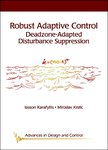
Publishing June 2025
This book presents a solution to a problem in adaptive control design that had been open for 40 years: robustification to disturbances without compromising asymptotic performance. This original methodology builds on foundational ideas, such as the use of a deadzone in the update law and nonlinear damping in the controller and advances the tools for and the theory behind designing robust adaptive controllers, thus guaranteeing robustness properties stronger than previously achieved. The authors present all stability notions, old and new, that are useful in adaptive control, provide numerous examples, and contrast their analysis to landmark approaches to robustification of adaptive controllers in prior literature.
This book
develops the Deadzone-Adapted Disturbance Suppression (DADS) control, a novel adaptive control methodology, and constructs a novel robust identifier that can work in parallel with every direct adaptive controller (not only DADS);
illustrates the DADS design with the wing rock instability application; and
provides ideas for the extension of the control scheme to cases not studied in the book.
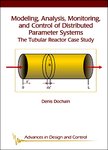
Publishing September 2025
This book compiles key findings on the modeling, analysis, estimation, and control design of various tubular reactor configurations. It explores both linear and nonlinear hyperbolic and parabolic partial differential equations, bridging the gap between theory and applications in distributed parameter systems.
The tubular reactor offers several important advantages when teaching and studying distributed parameter systems:
It covers multiple partial differential equations classes.
It bridges finite- and infinite-dimensional models.
It demonstrates diverse behaviors.
It links theory to practice.
It has a broad scope of application in biological, environmental, and chemical systems.
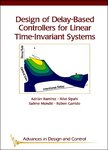
Publishing November 2024
This book provides the mathematical foundations needed for designing practical controllers for linear time-invariant systems. The authors accomplish this by incorporating intentional time delays into measurements with the goal of achieving anticipation capabilities, reduction in noise sensitivity, and a fast response. The benefits of these types of delay-based controllers have long been recognized, but designing them based on an analytical approach become possible only recently.
design of Delay-Based controllers for Linear Time-Invariant Systems provides a thorough survey of the field and the details of the analytical approaches needed to design delay-based controllers. In addition, readers will find
accessible mathematical tools and self-contained proofs for rigorous analysis
numerous examples and comprehensive computational algorithms to motivate the results
experiments on single-input single-output systems and multi-agent systems using real-world control applications to illustrate the benefits of intentionally inducing delays in control loops

This book introduces transfinite interpolation as a generalization of interpolation of data prescribed at a finite number of points to data prescribed on a geometrically structured set such as a piece of curve, surface, or submanifold. The time-invariant theory is readily extended to a moving/deforming data set whose dynamics is specified in a Eulerian or Lagrangian framework. The resulting innovative tools cover a very broad spectrum of applications in fluid mechanics, geometric optimization, and imaging. The authors chose to focus on the dynamical mesh updating in fluid mechanics and the construction of velocity fields from the boundary expression of the shape derivative.
Transfinite Interpolations and Eulerian/Lagrangian Dynamics
is a self-contained graduate-level text that integrates theory, applications, numerical approximations, and computational techniques; and
applies transfinite interpolation methods to finite element mesh adaptation and ALE fluid-structure interaction.
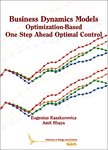
This book introduces optimal control methods, formulated as optimization problems, applied to business dynamics problems. Business dynamics refers to a combination of business management and financial objectives embedded in a dynamical system model. The model is subject to a control that optimizes a performance index and takes both management and financial aspects into account.
Business Dynamics Models: Optimization-Based One Step Ahead Optimal control includes
solutions that provide a rationale for the use of optimal control and guidelines for further investigation into more complex models;
formulations that can also be used in a so-called flight simulator mode to investigate different complex scenarios; and
a modern programming environment (Jupyter notebooks in JuMP/Julia) for modeling, simulation, and optimization. Julia code and notebooks are provided on a website for readers to experiment with their own examples.
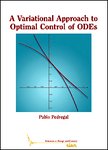
This self-contained book presents in a unified, systematic way the basic principles of optimal control governed by ODEs. Using a variational perspective, the author incorporates important restrictions like constraints for control and state, as well as the state system itself, into the equivalent variational reformulation of the problem. The fundamental issues of existence of optimal solutions, optimality conditions, and numerical approximation are then examined from this variational viewpoint.
Readers will find
a unified approach to all the basic issues of optimal control,
academic and real-world examples testing the book's variational approach, and
a rigorous treatment stressing ideas and arguments rather than the underlying mathematical formalism.
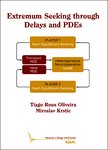
Extremum Seeking through Delays and PDEs, the first book on the topic, expands the scope of applicability of the extremum seeking method, from static and finite-dimensional systems to infinite-dimensional systems. In this book,
numerous algorithms for model-free real-time optimization are developed and their convergence guaranteed,
extensions from single-player optimization to noncooperative games, under delays and PDEs, are provided,
the delays and PDEs are compensated in the control designs using the PDE backstepping approach, and stability is ensured using infinite-dimensional versions of averaging theory, and
accessible and powerful tools are provided for analysis.

This book is about nonlinear observability. It provides a modern theory of observability based on a new paradigm borrowed from theoretical physics and the mathematical foundation of that paradigm. In the case of observability, this framework takes into account the group of invariance that is inherent to the concept of observability, allowing the reader to reach an intuitive derivation of significant results in the literature of control theory.
The book provides a complete theory of observability and, consequently, the analytical solution of some open problems in control theory. Notably, it presents the first general analytic solution of the nonlinear unknown input observability (nonlinear UIO), a very complex open problem studied in the 1960s. Based on this solution, the book provides examples with important applications for neuroscience, including a deep study of the integration of multiple sensory cues from the visual and vestibular systems for self-motion perception.
Observability: A New Theory Based on the Group of Invariance is the only book focused solely on observability. It provides readers with many applications, mostly in robotics and autonomous navigation, as well as complex examples in the framework of vision-aided inertial navigation for aerial vehicles. For these applications, it also includes all the derivations needed to separate the observable part of the system from the unobservable, an analysis with practical importance for obtaining the basic equations for implementing any estimation scheme or for achieving a closed-form solution to the problem.
This book is intended for researchers in robotics and automation, both in academia and in industry. Researchers in other engineering disciplines, such as information theory and mechanics, will also find the book useful.
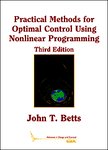
How do you fly an airplane from one point to another as fast as possible? What is the best way to administer a vaccine to fight the harmful effects of disease? What is the most effcient way to produce a chemical substance? This book presents practical methods for solving real optimal control problems such as these.
Practical Methods for Optimal control Using Nonlinear Programming, Third Edition focuses on the direct transcription method for optimal control, and features
a summary of relevant material in constrained optimization, including nonlinear programming;
discretization techniques appropriate for ordinary differential equations and differential-algebraic equations; and
several examples and descriptions of computational algorithm formulations that implement this discretize-then-optimize strategy.
The third edition has been thoroughly updated and includes
new material on implicit Runge–Kutta discretization techniques,
new chapters on partial differential equations and delay equations, and
more than 70 test problems and open source FORTRAN code for all of the problems.
This book will be valuable for academic and industrial research and development in optimal control theory and applications. It is appropriate as a primary or supplementary text for advanced undergraduate and graduate students.
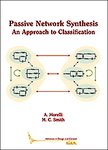
A resurgence of interest in network synthesis in the last decade, motivated in part by the introduction of the inerter, has led to the need for a better understanding of the most economical way to realize a given passive impedance. This monograph outlines the main contributions to the field of passive network synthesis and presents new research into the enumerative approach and the classification of networks of restricted complexity.
Passive Network Synthesis: An Approach to Classification serves as both an ideal introduction to the topic and a definitive treatment of the Ladenheim catalogue. In particular, the authors provide a new analysis and classification of the Ladenheim catalogue, building on recent work, to obtain an improved understanding of the structure and realization power of the class within the biquadratic positive-real functions.
This book is intended for researchers in systems and control, real algebraic geometry, electrical and mechanical networks, and dynamics and vibration.
电话和邮箱必须正确填写,我们会与您联系确认。
版权所有:内蒙古大学图书馆 技术提供:维普资讯• 智图
内蒙古自治区呼和浩特市赛罕区大学西街235号 邮编: 010021

暂无评论